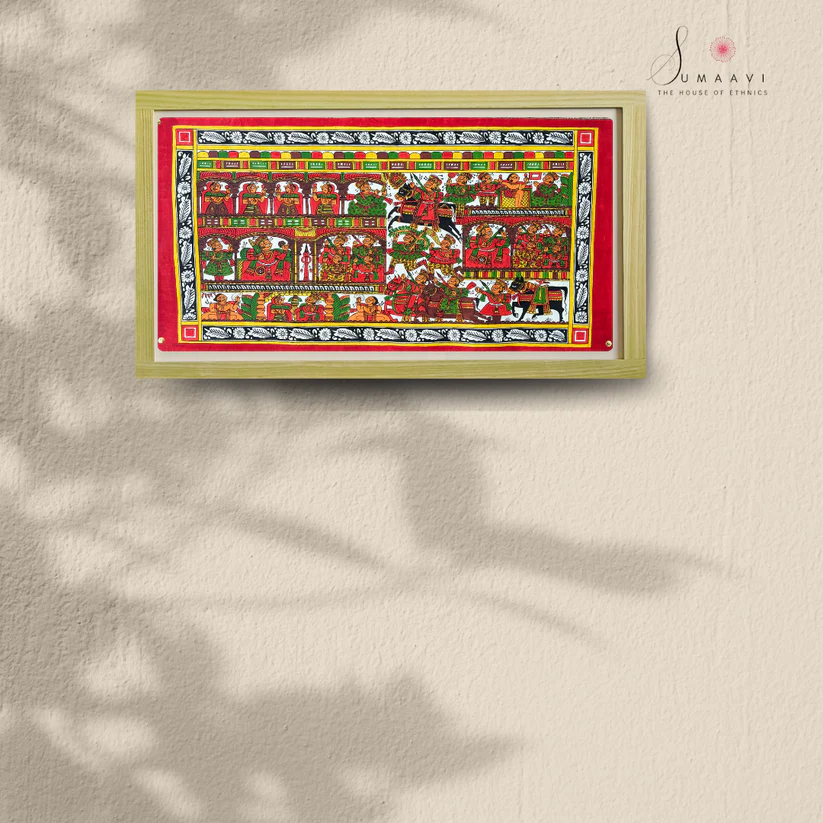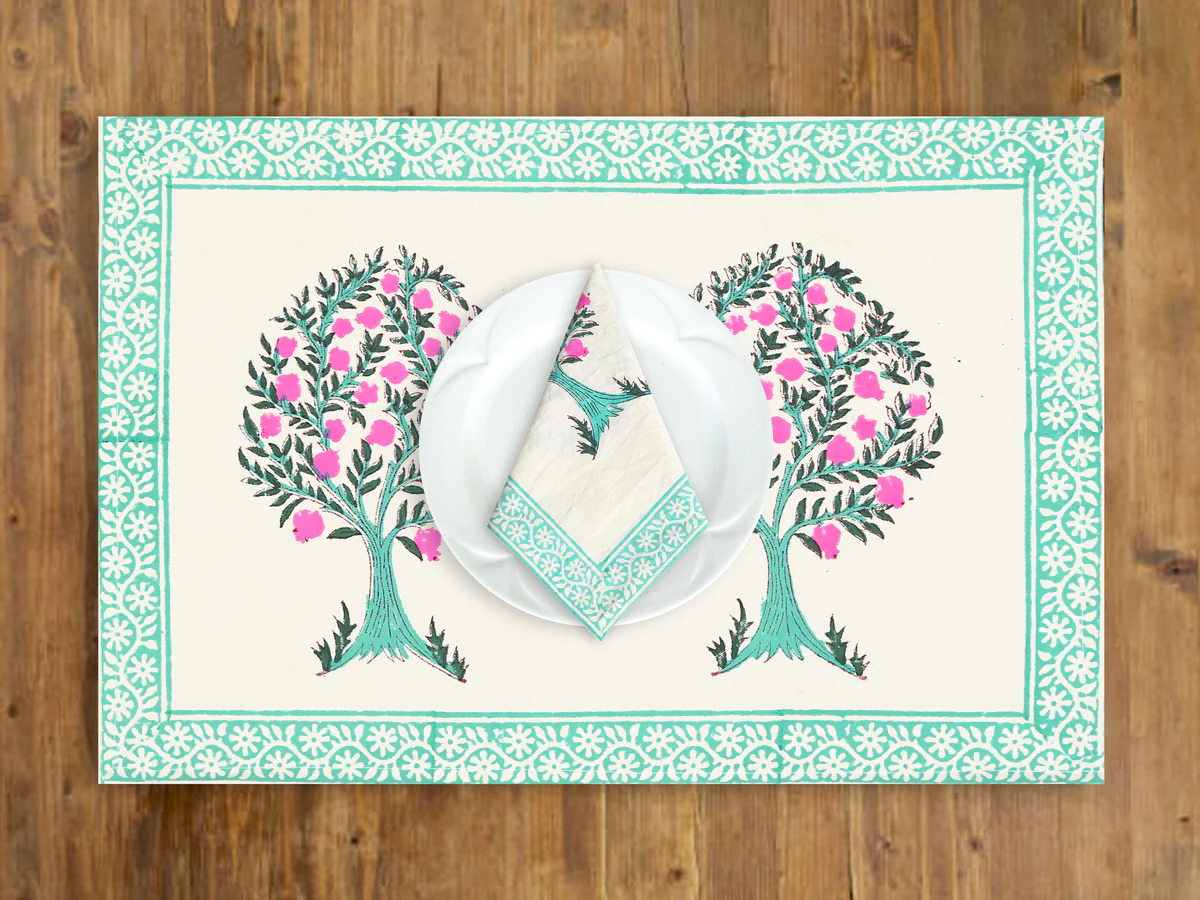Phad Painting Techniques: How This Traditional Art Comes to Life

Phad painting is a vibrant and intricate art form that has been a part of Rajasthan’s artistic and cultural heritage for centuries. This traditional scroll painting technique involves storytelling through detailed and expressive visuals, narrating epic tales of gods, folk heroes, and warriors.
Creating a Phad painting is not just about using colors on canvas; it follows a rigorous and traditional process that has been passed down through generations. This article explores the techniques and materials used in Phad painting, providing insight into how this timeless art comes to life.
What Are the Key Elements of Phad Painting?
Phad paintings have unique characteristics that distinguish them from other traditional Indian art forms. These include:
-
A Large Canvas Format – Phad paintings are usually painted on long horizontal cloth scrolls, sometimes extending up to 30 feet in length.
-
Bold and Expressive Figures – The paintings feature characters in a side profile with elongated eyes and exaggerated expressions.
-
Storytelling through Art – The paintings illustrate tales of Pabuji and Devnarayan, two of Rajasthan’s most revered folk deities.
-
Use of Natural Colors – Traditionally, Phad paintings are made using vegetable and mineral dyes, ensuring the artwork remains vibrant for centuries.
What Materials Are Used in Phad Painting?
Phad painting is known for its organic and sustainable approach to art. Artists use materials that are derived from nature, ensuring that the paintings retain their authenticity and longevity. The essential materials include:
1. Handmade Cotton Cloth
The base of a Phad painting is made from handwoven cotton fabric. The cloth is soaked overnight and then treated with a mixture of wheat flour and gum to provide a smooth texture for painting.
2. Natural Colors and Pigments
Phad artists prepare their own colors using traditional methods. Each color is extracted from natural sources, such as:
-
Yellow – Made from turmeric or limestone
-
Red – Derived from vermilion or flowers
-
Green – Obtained from indigo or leaf extracts
-
Blue – Extracted from lapis lazuli or indigo plants
-
Black – Created using lamp soot and gum
The use of natural dyes ensures that Phad paintings remain vivid and long-lasting, unlike chemical-based paints that fade over time.
3. Handmade Brushes
The brushes used in Phad painting are made from squirrel or goat hair, which allows for precise detailing and smooth strokes. The wooden handles are shaped for a comfortable grip, making it easier to create intricate patterns.
How Is a Phad Painting Created? Step-by-Step Process
Creating a Phad painting is a time-intensive process that requires skill, patience, and dedication. The following steps outline how this traditional artwork is made.
1. Preparing the Canvas
Before painting begins, the fabric is soaked overnight and stiffened using a special paste made from wheat flour and gum. This treatment enhances durability and provides a smooth surface for painting.
2. Sketching the Outline
Using a fine brush, the artist draws the initial outline of the painting with light strokes of charcoal or natural ink. The composition is designed in a storytelling format, ensuring that every section of the scroll has a meaningful narrative.
3. Filling in the Colors
Once the outline is complete, the artist begins adding colors in a specific order:
-
Yellow is applied first, filling the backgrounds and decorative elements.
-
Orange and red are used next, bringing warmth and depth to the painting.
-
Green and blue follow, adding contrast and detail to clothing and ornaments.
-
Black is used last, outlining the figures and adding final details.
This layering technique ensures that the colors blend harmoniously and maintain their vibrancy over time.
4. Enhancing the Details
After the base colors are applied, the artist uses fine brushes to add intricate details such as:
-
Facial expressions
-
Jewelry and ornaments
-
Patterns on clothing
-
Architectural elements
Each detail is meticulously painted to bring life to the story being narrated on the canvas.
5. Final Touches and Polishing
Once the painting is complete, it undergoes a final polishing process where the surface is gently rubbed with a soft cloth to enhance its gloss and texture. The painting is then left to dry in natural light for a few days.
How Do Phad Paintings Compare to Other Traditional Art Forms?
Phad paintings have certain similarities with other Rajasthani and Indian folk arts, but they also have distinctive features:
| Feature | Phad Painting | Pichwai Painting | Madhubani Painting |
|---|---|---|---|
| Origin | Rajasthan | Rajasthan | Bihar |
| Canvas | Large scrolls | Fabric & paper | Handmade paper |
| Themes | Folk deities & epics | Lord Krishna themes | Mythological & nature-based |
| Colors | Natural dyes | Bright & detailed | Earthy tones |
| Figures | Elongated & expressive | Rounded & stylized | Geometric patterns |
For those interested in exploring Pichwai Paintings Online, you can find authentic collections here. Similarly, if you are looking for Best Phad Paintings Online, visit here.
How Has Phad Painting Evolved Over Time?
While Phad painting remains deeply rooted in tradition, it has evolved to accommodate modern artistic expressions. Some notable changes include:
-
Smaller Phad paintings – Traditional scrolls were massive, but contemporary artists now create miniature versions for easy display.
-
New themes and narratives – Artists are now incorporating contemporary themes such as women empowerment, environmental issues, and cultural diversity.
-
Digital Adaptation – Some artists are digitizing Phad paintings, making them available for e-commerce and global art lovers.
Why Should Phad Paintings Be Preserved?
Phad painting is not just an art form—it is a cultural legacy. Preserving this tradition is important because:
-
It safeguards Rajasthan’s folk heritage.
-
It supports local artisans and their families.
-
It keeps ancient storytelling traditions alive.
-
It contributes to India’s diverse artistic landscape.
Supporting traditional artists by purchasing authentic Phad paintings is one way to ensure this heritage remains intact for future generations.
Conclusion
Phad painting is a living art form that bridges the past with the present. Its intricate techniques, natural materials, and storytelling approach make it one of the most treasured traditions of Rajasthan. By understanding the techniques behind Phad painting, we gain a deeper appreciation for the skill and dedication required to create these masterpieces.
Whether you are an art enthusiast or a history lover, exploring Phad paintings allows you to connect with India’s cultural essence in a profound way.







